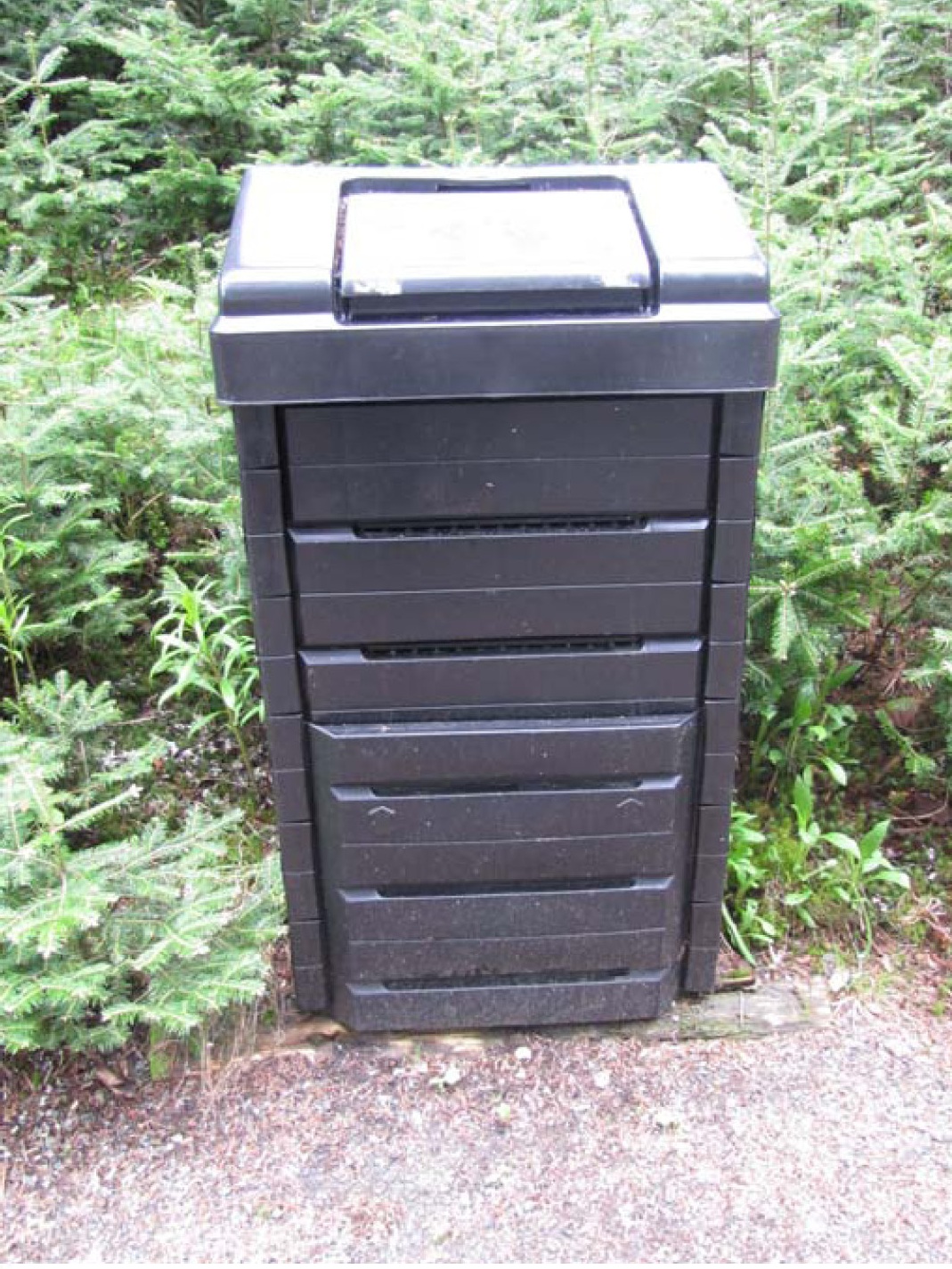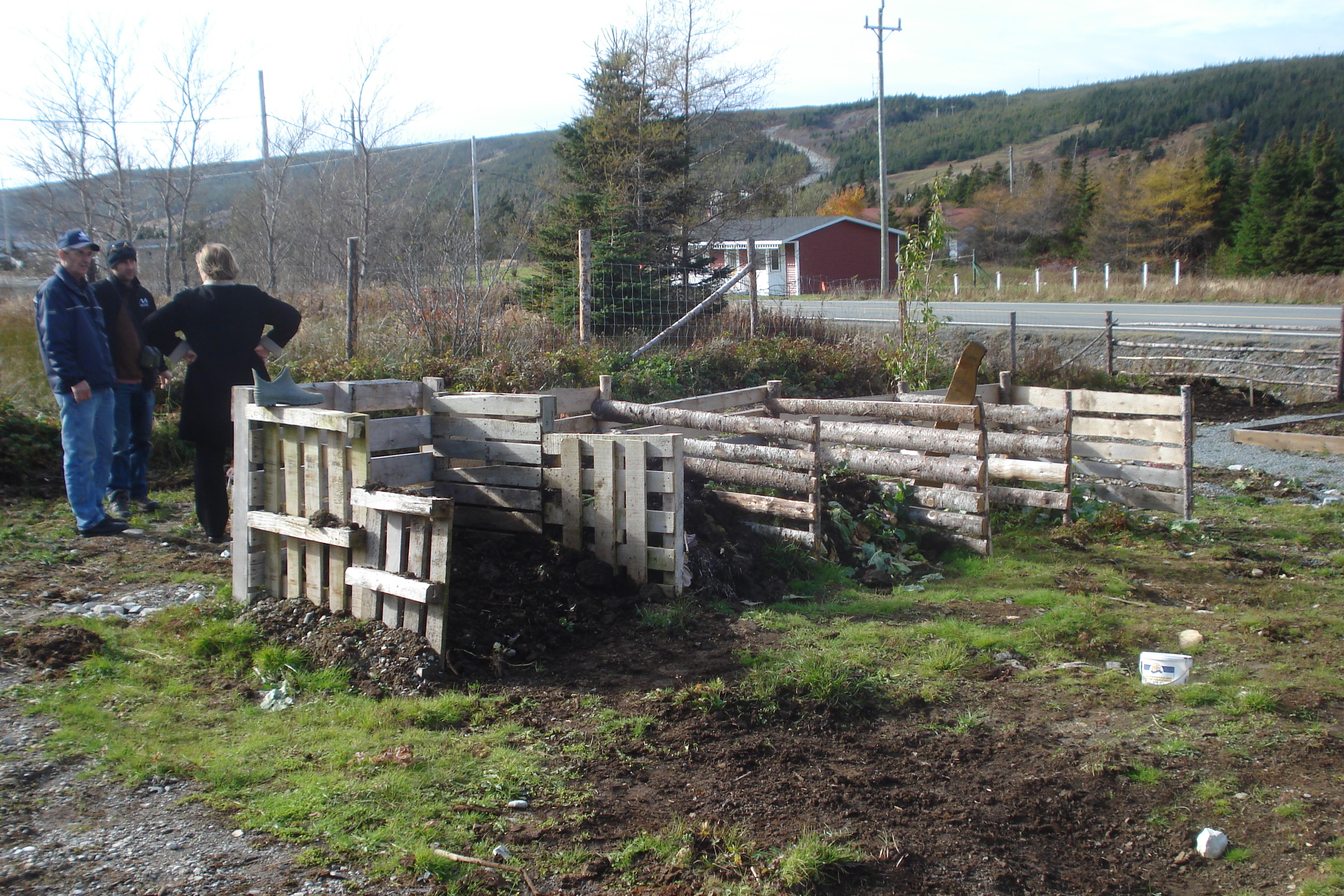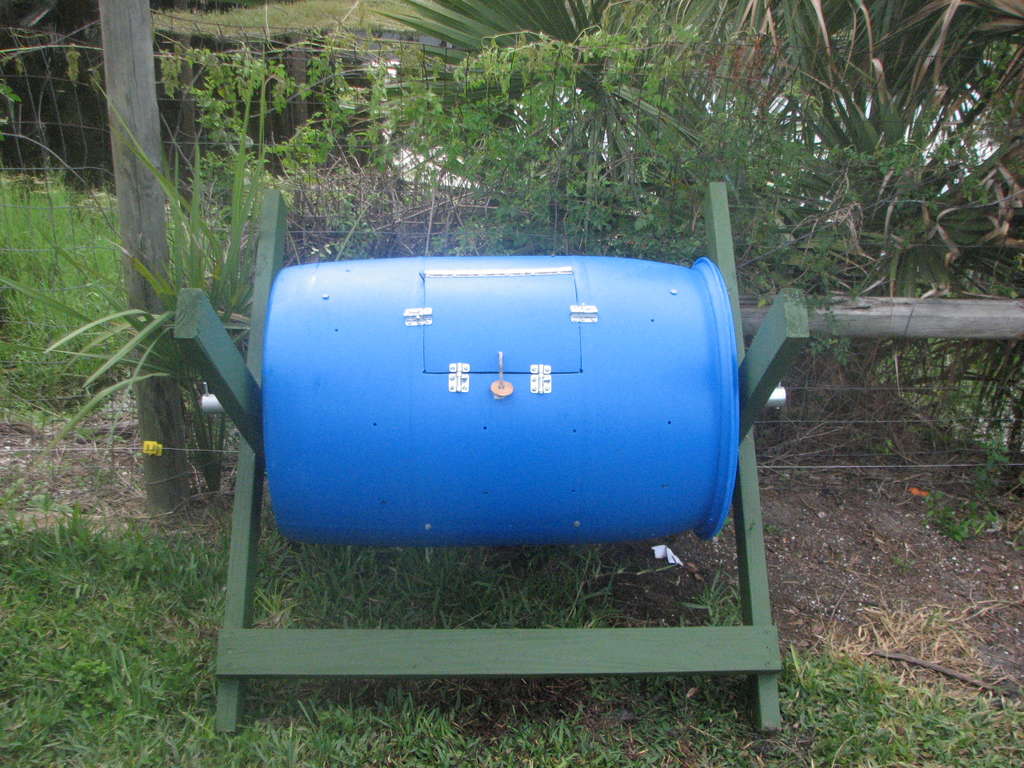 This post is adapted from the Composting Workshop.
This post is adapted from the Composting Workshop.
Thinking of setting up a new compost bin? We've shared lots of information on how to make compost here, here, here and here. Now in this post we're going to give you tips and patterns to help you choose, design, and build your perfect bin. Keep in mind that one size does not necessarily fit all. Really consider your space, needs and resources and feel free to alter any of these designs to make them fit your life better.
Compost Bin Patterns
Multiple patterns
MMSB: www.mmsb.nl.ca/backyard-composting.asp?s=compost-bin-plans-and-retailers
The City of Edmonton: http://www.edmonton.ca/for_residents/PDF/compost_bins_build.pdf
University of Wisconsin Extension: www3.uwm.edu/Dept/shwec/publications/cabinet/html/compost/Bin%20Plans.htm
RRFB Nova Scotia: http://reduceyourwaste.ca/build-your-own-composter.asp
Single pattern
Stackable wood portable bin: www.composting101.com/building-a-bin-article.html
Stackable balcony composter: http://www.goveganic.net/spip.php?article201
Terracotta pot composter: http://www.instructables.com/id/Terracotta-home-composter/#step1
Rotating compost bin (tumbler): http://www.instructables.com/id/compost-bin/
Types of Backyard Compost Bins
Almost any kind of bin can be adapted to compost in. As a general rule choose a bin that is between 3’ x 3’ x 3’ and 5’ x 5’ x5’ in size. Any smaller and not enough heat will build up to decompose waste; any bigger and it will be difficult to turn and aerate the pile so anaerobic bacteria could move in and cause trouble. Design your own bin or choose one of several standard styles with designs to suit your backyard and composting needs:
Molded Plastic Bins
These are usually either domed or rectangular and they are made of molded plastic. They work well because they retain heat and deter pests and many people find them more attractive to look at than open-design bins. Their contents need to be turned regularly to allow for enough air flow. You can buy molded plastic compost bins at home and garden centres or contact your municipality or MMSB to find out if they are being retailed locally through a program. You could also make your own version using a plastic garbage can (see links above for examples).
Portable Compost Bins
There are many designs for portable bins that can be made with wooden flats, chicken wire, screens or other light-weight materials. The benefit of portable bins is that they can be picked up off of a compost pile to make room to turn and sort the compost. The portable bin is then put in a new location, refilled with materials that are not finished composting and the process begins again of adding new waste. One drawback of these bins is they are generally very open to the weather and susceptible to overwatering from rain or drying out from wind. An open-concept portable bin should be kept in a sheltered location. Portable compost bins are usually homemade and there are many designs and tutorials online to choose from or check out some of the links below.
Multi-compartment Systems
A multi-compartment system is larger than a single bin and allows for continuous composting of large quantities of materials. They work very well for community gardens or in rural areas where there is a lot of yard waste to process. One section of the system is for storing dry brown materials. The other sections will hold compost in various stages of decomposition. Multiple compartments allow for full turning of compost as it is moved from one bin to the next.
Rotating Compost Bins
Rotating bins are usually cylinders that are raised off the ground on a support structure and have a handle at the side that allows the whole bin to be turned. They can be homemade using reused plastic or metal barrels or can be commercially purchased. Turning a rotating bin aerates and mixes its contents well. Soil or other compost activators should be added into rotating bins because they are elevated and cannot access organisms in the ground directly. At some point when using a rotating bin it will be necessary to leave it alone for a while so contents can finish decomposing, which may interrupt your composting routine.
Stacked Compost Systems
Stacked compost systems are great for small spaces because they take up room vertically rather than horizontally and are generally compact. In a stacked system waste is added into the top compartment, breaks down slowly and then is moved down through the lower compartments, until finally finished compost can be harvested from the bottom. Stacked compost systems cannot process a great deal of waste and are better for small households.
Tips for Building Backyard Compost Bins
-
Always use materials that are free from toxic substances when building your compost bin.
- Compost needs air flow in order for aerobic bacteria to thrive and break down waste. Choose a bin that has gaps, holes, or an open side to allow for air flow. Also choose a bin that isn't too big for you to reach into and stir the contents to increase air flow.
- Compost can take a while to break down in our cooler climate. To speed things up you can choose a bin that will retain warmth, like a plastic one or one painted a dark colour.
- Choose natural wood rather than pressure treated if possible. Cedar is a good choice because it stands up to moisture well, but it can be expensive so keep an eye out for salvageable cedar to reuse.
- To protect the exterior of a wooden bin, coat it with a layer of linseed oil each spring. Linseed is another name for flax seeds. Linseed oil is available at hardware and garden centres.
- Use food-safe materials if possible, particularly if spreading compost around edible plants. Talk to food wholesalers and restaurants to find out where to get containers locally to reuse, like large barrels and crates.
- If there are rodents in your area, then when choosing a new bin keep in mind the tips for deterring them found in the Composting Workshop.
- Protect open bins from too much moisture by covering them with a lid or tarp.








